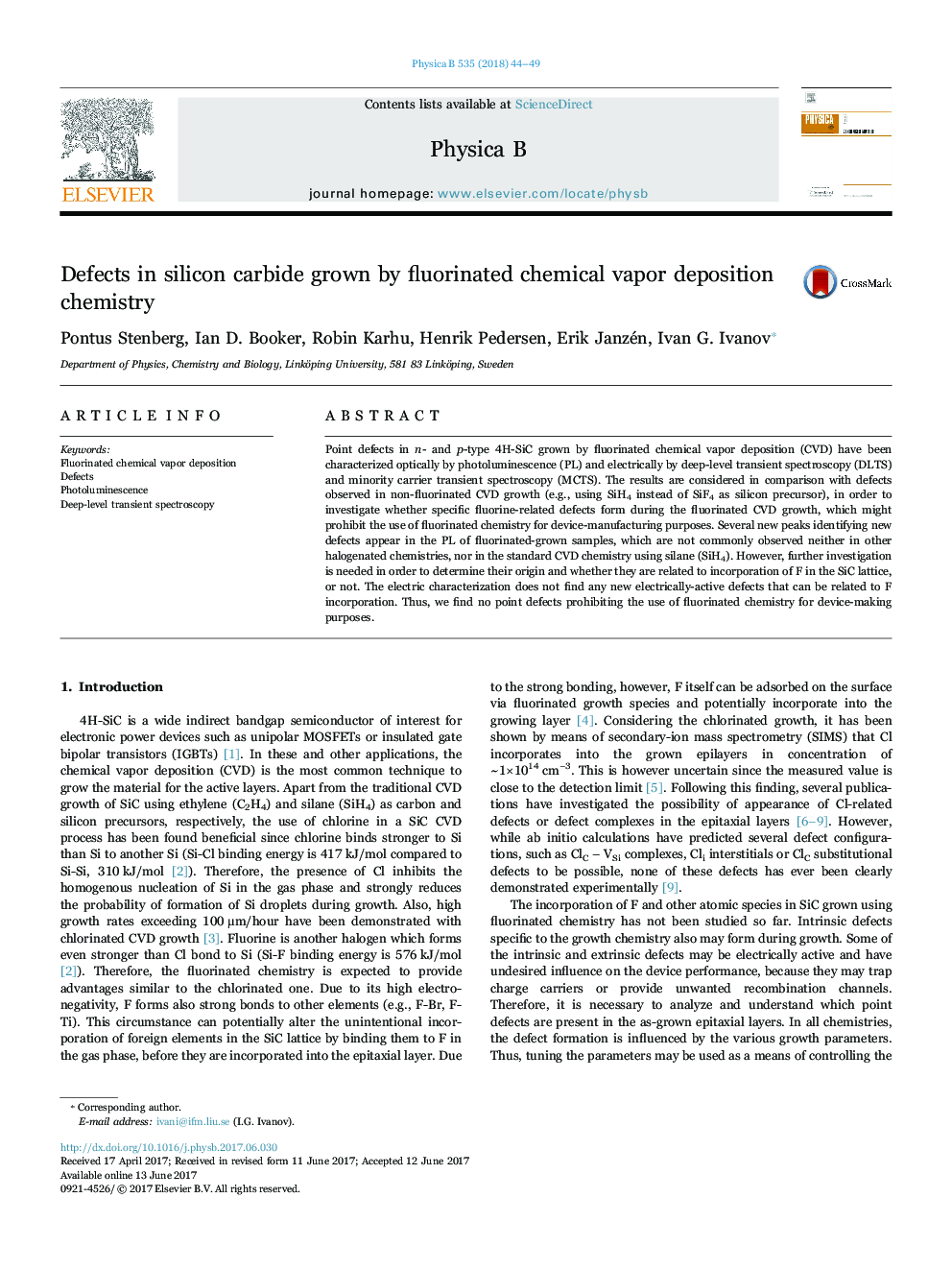| Article ID | Journal | Published Year | Pages | File Type |
|---|---|---|---|---|
| 8161032 | Physica B: Condensed Matter | 2018 | 6 Pages |
Abstract
Point defects in n- and p-type 4H-SiC grown by fluorinated chemical vapor deposition (CVD) have been characterized optically by photoluminescence (PL) and electrically by deep-level transient spectroscopy (DLTS) and minority carrier transient spectroscopy (MCTS). The results are considered in comparison with defects observed in non-fluorinated CVD growth (e.g., using SiH4 instead of SiF4 as silicon precursor), in order to investigate whether specific fluorine-related defects form during the fluorinated CVD growth, which might prohibit the use of fluorinated chemistry for device-manufacturing purposes. Several new peaks identifying new defects appear in the PL of fluorinated-grown samples, which are not commonly observed neither in other halogenated chemistries, nor in the standard CVD chemistry using silane (SiH4). However, further investigation is needed in order to determine their origin and whether they are related to incorporation of F in the SiC lattice, or not. The electric characterization does not find any new electrically-active defects that can be related to F incorporation. Thus, we find no point defects prohibiting the use of fluorinated chemistry for device-making purposes.
Related Topics
Physical Sciences and Engineering
Physics and Astronomy
Condensed Matter Physics
Authors
Pontus Stenberg, Ian D. Booker, Robin Karhu, Henrik Pedersen, Erik Janzén, Ivan G. Ivanov,
